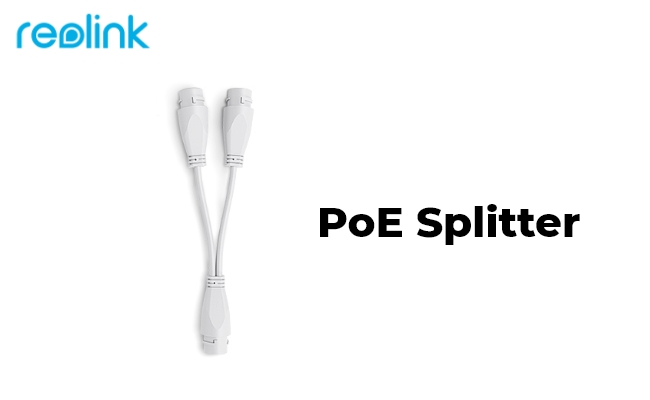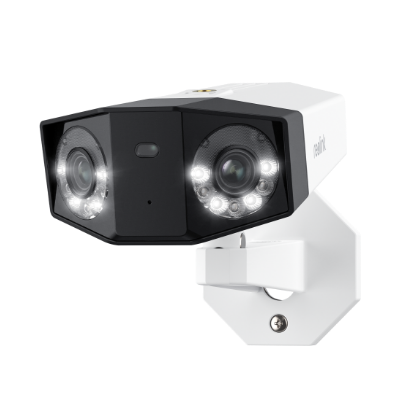PoE Splitter: Definition & How It Works

Power over Ethernet (PoE) has a significant application in the arena of networking and power distribution. A vital aspect of PoE systems is the use of a PoE splitter. A PoE splitter is a device that enables you to stratify the power and data signals from an ethernet cable.
Common PoE splitters allow otherwise non-PoE devices like IP cameras and wireless access points to be powered using a switch or an injector that is built with the capability of providing power. This means that the splitter taps on the ethernet cable for power and delivers it to the connected device without affecting data signals passing through.
What Is a PoE Splitter?
A PoE splitter is a device that splits power and data signals in networking from an Ethernet cable. It enables you to connect non-PoE devices through a PoE switch or injector.
Through the splitting motion, power from the Ethernet cable is taken out and transmitted to only the device connected via it while allowing data signals to carry on unhindered. With the help of PoE splitters, there is no need for further power outlets installed in such devices with additional supplementary connections.
In the case of PoE installations, to provide power for devices such as PoE IP cameras, wireless access points, and VoIP phones, one usually implements PoE splitters.
Types of PoE Splitters
PoE splitters are available in different forms which match the power needs and intended applications. We will now discuss three parts of PoE Splitters, namely the Ethernet, 12V, and 24V PoE splitter, and their nature.
Ethernet PoE Splitter
An Ethernet PoE splitter is a device that separates the power and data stream of a cable into two separate streams, one providing power to non-PoE capable devices.
It usually carries an Ethernet input port, power output port, and data outlet. It supports all standard Ethernet methods, with the ability to send electricity along with data through a single cable.
Examples of Ethernet splitter PoE’s use cases indicate that they provide power for devices such as IP cameras, wireless access points, and VoIP phones. This splitter is commonly employed where PoE-based switches or injectors are implemented for the effective distribution of power to several devices.
12V PoE Splitter
A PoE 12V splitter is mainly for the provision of power at 12 volts to non-PoE devices. It works by tapping energy from the Ethernet cable and converting it to a steady 12V DC output. The PoE splitter 12V comes with different power connectors to support various devices.
Additionally, the 12V PoE splitter is a popular solution for powering devices like routers, access points, and surveillance systems. It provides an easy way for devices using a 12V DC power supply to avoid the need for different adapters or fixed outlets.
24V PoE Splitter
The PoE 24V splitter is like the 12V one but with a higher voltage output of 24 volts. It works on the same principle as that of energy extraction from Ethernet cable and conversion to a stable 24V DC supply. This sort of splitter is favorable for products that require a higher voltage input.
24V power supplies are frequently helpful for devices such as network switches, wireless bridges, and industrial equipment. The PoE splitter 24V makes it possible to directly power devices of this type thus making the installation more simplified and cutting off dependencies on external sources of energy.
How Do PoE Splitters Work?
To provide power from Ethernet cables to non-PoE devices like security cameras, PoE splitters are extremely important. Here's how they work:
- Power and Data Separation: The PoE splitter separates the power and data signals when a PoE signal is received from a switch or injector that has been enabled for PoE.
- Power Extraction: The power is removed from the Ethernet cable but not interfered with by means of a splitter.
- Power Delivery: The extracted power is further converted via a separate output and made available to any connected non-PoE device, such as security cameras.
- Device Compatibility: PoE splitters guarantee that the supplied power is commensurate with the consuming device. Various types of PoE splitters include 12V and 24 V to satisfy the different voltage requirements for devices.
- Simplified Installation: Using a PoE Splitter, non-PoE devices such as security cameras can be powered and connected to the network via one Ethernet cable. It does so with further power cables and eases installation.
Best PoE Splitter For Security Camera Recommendation
The PoE combiner and splitter RLA-PoECS1 is one of the recommended products for Security Cameras installations. This PoE Combiner&Splitter enables you to control two cameras using a single Ethernet cable, which means that there is no requirement for more wiring installation and thus reduces the cost of production.
In addition, the RLA-PoECS1 makes use of the combiner and splitter functions, which combine data from two ports along with PoE power into one cable, which is then split to supply power for two cameras. The water-tight caps that come with the splitter give protection to connectors, assuring some level of resilience in conditions outside.
Furthermore, the RLA-PoECS1 is exclusively suited for Reolink PoE cameras – these are specifically made not just to work with them but, more so, to give the best result possible. For example, you can use the upcoming Reolink Duo 3 PoE with this splitter to simplify installation or extend wiring reach.
Groundbreaking 16MP Dual-Lens PoE Camera
16MP UHD, Dual-Lens, Motion Track, 180° Wide Viewing Angle, Power over Ethernet, Color Night Vision.
Benefits Of Using PoE Splitters
PoE splitters provide many benefits, some of which include the following:
Easy Installation
With PoE splitters, the installation process is made less complicated, as devices can be connected and powered through a single Ethernet cable. This eradicates the use of separate power cables and outlets during setup, which is time-consuming.
Cost-Effective
This is done by using PoE splitters that reduce the need for power infrastructure. It minimizes installation costs as it does not require additional electrical wiring or power outlets.
It also gives freedom in positioning the devices since cameras and other equipment can sit at ideal sites, whereby one needs to consider nearness to power sources.
Flexibility And Scalability
PoE splitters enhance the flexibility of placement by providing non-PoE devices, such as IP cameras or wireless access points, with freedom of installation away from power resources.
Moreover, PoE splitters provide simple scalability, as an extra device can be added to the network without complicated restructuring or power issues.
Reliability And Efficiency
PoE splitters are designed to maintain reliability by ensuring that connected devices receive power equalization and the proper amount of power transmitted through an Ethernet cable.
This evens out the risk of power disruptions or instability, which is normally associated with conventional sources.
PoE Injector vs. Splitter: What's The Difference?
The principal distinction between the PoE injector and a splitter is that they differ in function as well as where power goes. Although both are PoE-powered, one provides receipt, whereas the other offers power. Here is the difference between PoE injector vs splitter:
PoE Injector
A PoE injector integrates the power and data signals; it then converts electricity into the Ethernet cable. It is usually used in conjunction with PoE-enabled networks and provides power to the devices due to their lack of built-in capability for getting power from a PoE network. The injector imposes power upon the data signal before sending it to the device.
PoE Splitter
On the contrary, a PoE splitter isolates power and data transmission from Ethernet wire. It is a source of power for non-PoE devices, which need networking connectivity. The splitter separates the power from the Ethernet cable and feeds it to a non-PoE device while suffering no harmful impact on data signals in transit.
FAQs
What Does A PoE Splitter Do?
A PoE splitter divides power and data on a Power over Ethernet (PoE) connection, ensuring that non-supporting devices receive the needed electricity. In simple terms, Ethernet PoE splitters remove power from data and enable devices to be powered via an Ethernet connection. Both are vital to the provision of power and data connectivity.
How Do I Split Power Over Ethernet?
The PoE Splitter can split the Power over Ethernet, whereby power and data are separated, and you provide cubic power as well.
Will A PoE Injector Damage A Non-PoE Device?
Absolutely, under such circumstances an injected PoE may also harm a device constructed for non-PoE if it can't handle the provided power.
Conclusion
The understanding of a PoE injector and its difference from the case of a PoE splitter is essential in laying out a Power over an Ethernet (PoE) network. Injectors provide power to the Ethernet cable so that non-PoE devices will enjoy PoE technology.
We highly welcome your comments with any thoughts, experience, or inquiries on PoE injectors and splitters. Your contribution to our community increases its information flow and discourses.
Search
Be in the Know
Security insights & offers right into your inbox

